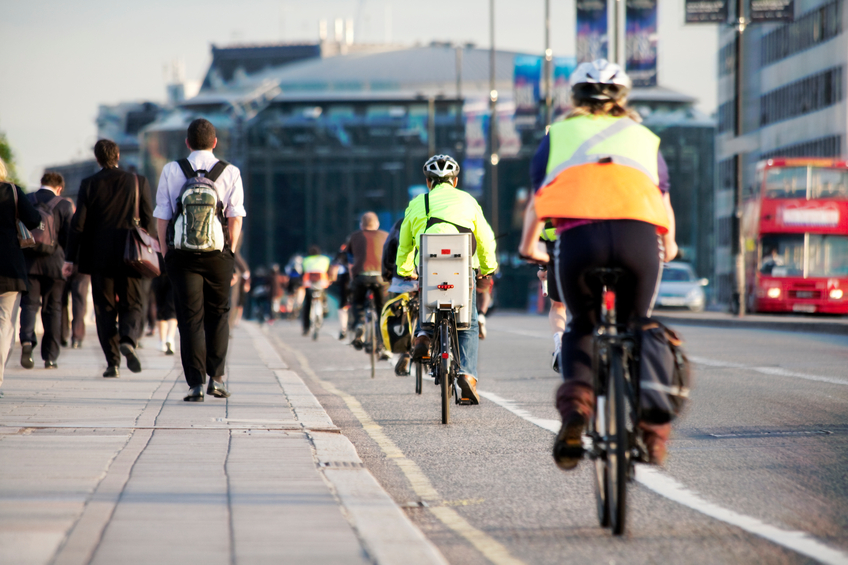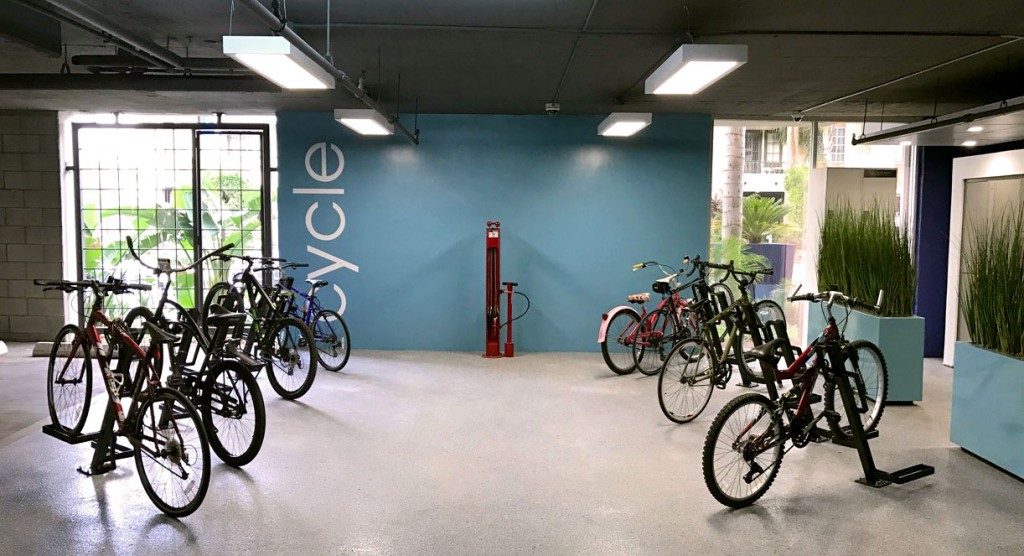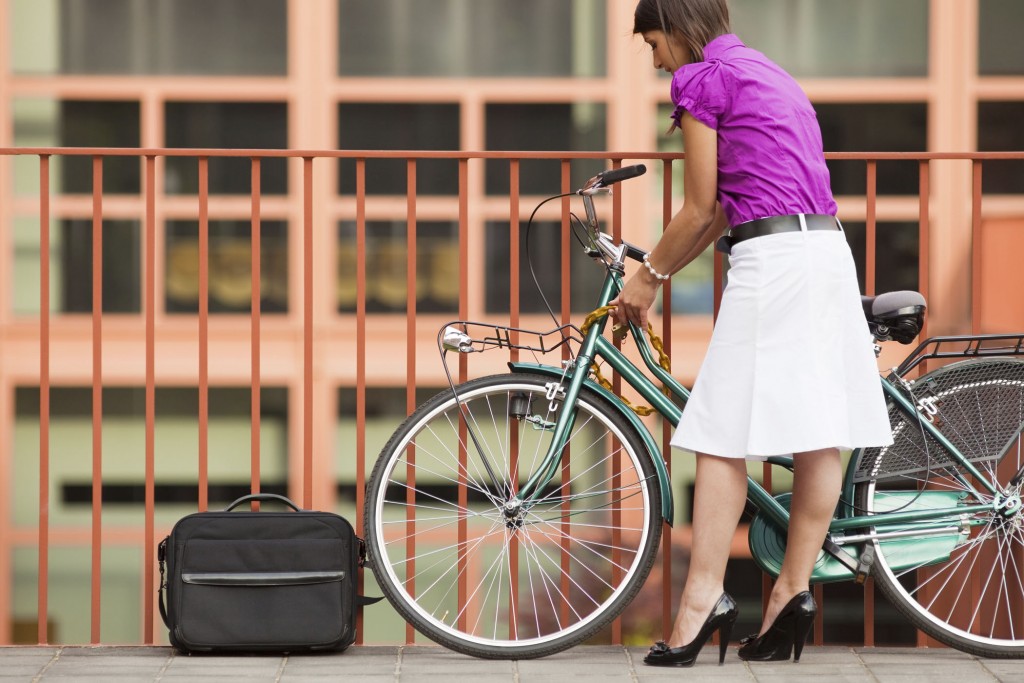 The trend continues - more cities are creating bicycle master plans, investing in bike infrastructure and requiring bike rooms in new buildings
The trend continues - more cities are creating bicycle master plans, investing in bike infrastructure and requiring bike rooms in new buildings
There's no doubt about it - bicycling infrastructure continues to grow in America as we see more bicycle master plans, bike lanes, bike-share programs, bicycle racks, bike rooms and bike laws.
According to the Census Bureau, 43 of the 70 largest cities in the US saw an increase in 2015 in bike commuters. Many cities are approaching a milestone of 4% bike commuting mode share. Portland is at 7%. How high is realistic? Well, experts say Copenhagen is able to achieve a 56% bike mode share.
We think it's only going to get better in 2017. Here are our predictions:
Cities will continue to adopt bicycle master plans to be more bicycle friendly
At one time Portland was considered the epicenter of great bicycle infrastructure and far ahead of the rest of the country. But other major cities have caught on to the benefits of making it easy to bicycle around town. A big catalyst has been the obsession of Millenials for their bikes and their preference for living in urban areas and biking to work. (Don't think mayors haven't noticed this - after all, this demographic is the next big block of voters and donors).
So, across America, cities have been adopting bicycle master plans and ramping up investments in their bicycle infrastructure. Several city leaders have declared they want to be known as the "bicycle mayor." And they are walking the talk.
For example, check out this list of the Top Bicycle Cities according to Bicycling magazine.
The magazine chose several factors to determine rankings including miles of buffeted and standard bike lanes, bike boulevards, bike share programs, dedicated bike paths per square mile and number of bicycle friendly businesses (The Park and Facilities Catalog is one.).
No. 1 - Chicago - Mayor Rahm Emmanuel has built 100 miles of buffeted and protected bike lanes. Here's the kicker, it only cost $12 million. Think of how much 100 miles of new roadways would cost in a city that large.
No. 2 - San Francisco - you literally must be crazy to drive in this city. That's one reason why bike commuting grew 16% from 2012 to 2014.
No. 3 - Portland - this city continues to set the pace for the rest of the country. For example, they just built the Tilikum Crossing across the Willamette River for transporting bikes and buses, but guess what, cars are not included. That's right - no cars on a major downtown bridge. Talk about a paradigm shift. Again, Portland leads the way as far as bicycles as a means of transportation.
No. 4 - New York City - Mayor Bill deBlasio is not to be outdone when it comes to sustainable transportation and he has spent $100 million on bike lanes and making it safer to bicycle in the Big Apple.
No. 5 - Seattle - this city is trying to keep up with its neighbors to the south and created a new master plan for bicycling with a pledge of one billion dollars to be spent over the next decade. The city is also working on a proposed 50-mile network of connected bikeways.
By the way, these connected networks are the next big thing for bicycle infrastructure and will be emphasized by the League of American Bicyclists when they contact members of Congress this year. Experts recommended creating an interconnected network of bike lanes so a bicyclist can ride safely not only from point A to B in a city, but can get all the way around to point Z.
The next five are Minneapolis, Austin, Cambridge, MA, Washington, DC (which has a bike share program and is the best way to view the nation's capital) and Boulder.
It's worth mentioning that even car-loving Los Angeles moved up 28 places on the magazine's list. This is a good example on how every major city is hopping on the bike infrastructure wave. Tinseltown does not want to be left behind. The mayor has instituted a "Great Streets" project to add more protected bike lanes and the city has added a "Bike Metro" bike share program.
As you can see, it's to the point now where cities don't want to be seen as not having a comprehensive bicycle planning initiative. How embarrassing would it be to attend a National League of Cities meeting and discover you were the only municipality that wasn't adding a huge number of bike lanes?
More bike rooms will be built
Mayors and city planners sure like the idea of everybody getting on their bikes and riding around town.
This solves a lot of problems. For one, it helps with traffic, which is always a nightmare. Secondly, as we pointed out, building a protected bike lane is certainly easier and cheaper than building a highway or a train station. Then there are the headaches during the road construction process which is always behind schedule. Anybody remember "Carmaggedon" in L.A. or the "Big Dig" in Boston?
 The newly renovated bike room in the Waterstone building featuring UpLift bike docks
The newly renovated bike room in the Waterstone building featuring UpLift bike docks
Third, every major city now has a sustainability initiative. You want to save the planet. Here's a big way to do it - make it easier for people to ride their bikes around town instead of drive.
That includes creating bicycle storage. For short term bicycle parking, add more bike racks around town. Take one car parking space and add a bike corral for 12-18 bikes. Set aside more bicycle parking in parking garages.
But then there's the issue of long-term bicycle parking. When people return to their apartments, where are they going to park their bicycles? Nobody likes lugging a bicycle up a set of stairs. Or bringing a bicycle covered in mud and snow into an elevator.
More and more cities are now passing zoning laws requiring the addition of bike rooms in apartment buildings. They want to see support for their investment in bike lanes around town. City officials generally are requiring at least one indoor bike parking space per dwelling unit. (Here's a way to check bicycle zoning requirements in different cities. This link shows Los Angeles' requirements as an example).
Smart real estate marketers use an attractive bike room as a selling feature, just like a spa, roof top terrace or a gym (and by the way, a bike room is much less expensive to build). With advancements in the manufacturing of vertical bike racks, more bicycles can be stored indoors without taking up large amounts of square footage which is obviously at a premium.
Savvy architects are creating bike rooms that are not only equipped with convenient, space-saving vertical bike racks, but also with amenities such as showers, lockers, bike repair stations, bike washing stations and air pumps.
One building in NYC is placing their bike room on the 19th floor with a view. How appealing is that to an avid bicyclist?
President Trump will spend a "YUGE" amount of money on infrastructure. Will that mean more bike lanes?
Let's face it. Donald Trump may now be president, but he's always been a builder. He has pledged to spend a trillion dollars to rebuild the country's infrastructure of roads and bridges.
Wouldn't it be great if some of that money was dedicated to improving our country's bicycling infrastructure? Once planners start to create a blueprint for the actual work and see the "YUGE" cost of building all those highways - adding bike lanes and bike parking racks as an alternative is certainly going to have some merit.
 As more people commute by bicycle, more bike parking racks will be required
As more people commute by bicycle, more bike parking racks will be required
Groups like the League of American Bicyclists have their eyes on that trillion dollars as well and are making the case to leaders in Congress to be sure bicycles are considered in that overall plan. The group urges every bicycling citizen to do the same.
All in all - next year should be a great year for bike commuters and bicyclists in general. Sure, there is opposition. Some times the construction of a new protected bike lane makes it harder for motorists and they complain to City Hall. In fact, there have been instances where bike lanes have been ripped up and removed from roadways. That's going to happen. We are in a transition period and adjustments will be made.
But when you look at the numbers, bicycling across the America is on the rise. You want to address sustainability, pollution, congestion and health issues? Here's a no-brainer way to do it.
Make it easier for people to ride their bikes to work on protected bike lanes, ride their bikes around town on connected networks, store their bikes in dedicated bike rooms and safely cross intersections. Do that and more people will gladly pedal a bicycle.
For proof, all you need to do it look overseas at cities like Copenhagen. They built a fantastic bicycle infrastructure and now HALF of the people there commute by bicycle. Automobile traffic and the associated smog has been reduced dramatically. It is estimated that the capital region of Denmark has one million fewer sick days.
Imagine what that would mean to a city like NYC? You could literally close thoroughfares like Fifth Avenue. Turn them into pedestrian and bicycle plazas filled with planters, sidewalk vendors, and park benches instead of smelly and dangerous cars. Reduce air pollution. Eliminate traffic jams. Help people exercise. Wouldn't that raise the quality of life in any city?
Increasing bicycling infrastructure is a simple, inexpensive solution that works. Let's keep the momentum rolling in 2017.


